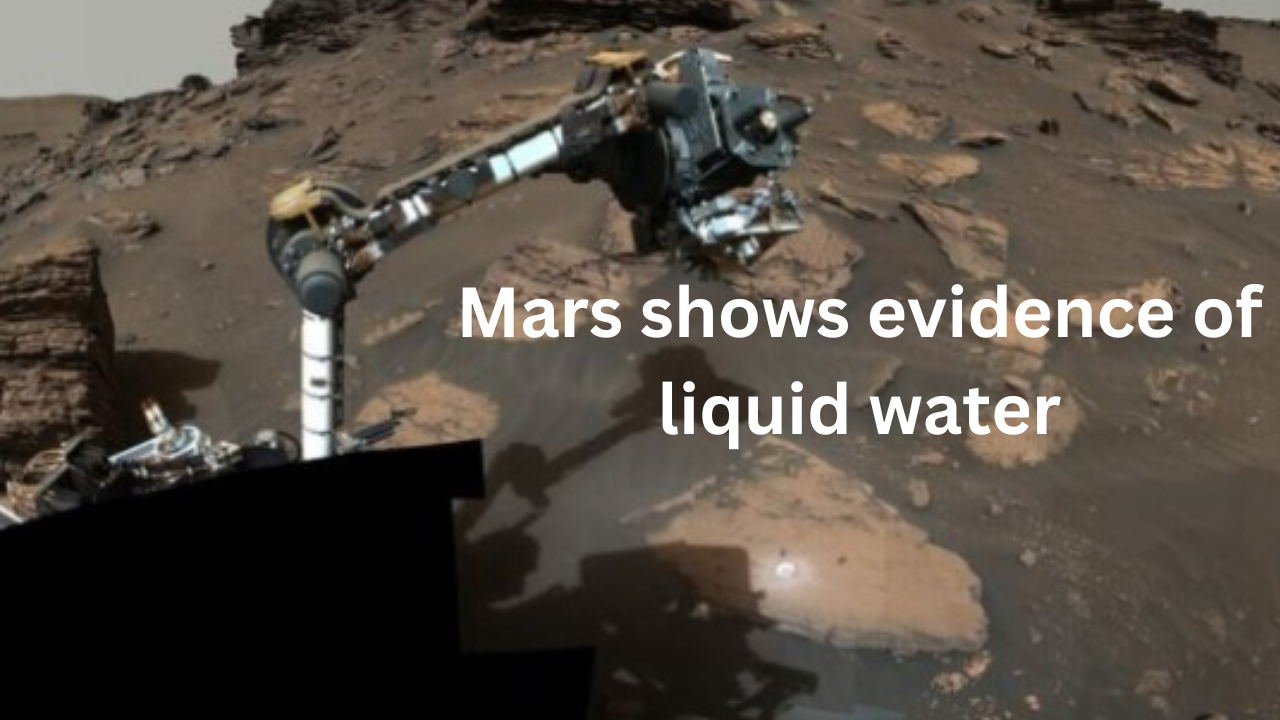Mars Shows Evidence of Liquid Water, According to a NASA Rover
For decades, Mars has been the focus of intense scientific curiosity, with researchers striving to unravel the mysteries of the Red Planet. Among the most tantalizing questions is whether Mars ever supported life, and central to this query is the search for water. While the presence of frozen water has been confirmed on Mars, the discovery of liquid water is a game-changer. Recently, NASA’s rover, Curiosity, has provided new evidence suggesting that liquid water might have existed, and possibly still exists, on Mars.
Historical Context
Mars, often called Earth’s “sister planet” due to its similar size and proximity, has been the subject of speculation since the 19th century. Early astronomers, observing dark streaks on its surface, hypothesized that they might be canals built by intelligent life to transport water. While those ideas were debunked, the possibility of water on Mars persisted. The Viking missions of the 1970s found no definitive evidence of water, but more recent missions have changed that perspective.
In 2004, NASA’s Opportunity and Spirit rovers found compelling evidence that liquid water once flowed on Mars. The discovery of hematite, a mineral that typically forms in water, and certain rock formations suggested that Mars had a wetter past. But these findings pointed to water existing billions of years ago, raising questions about its current state.
Curiosity Rover’s Breakthrough
Curiosity, a car-sized rover that landed on Mars in 2012, was tasked with exploring Gale Crater, a large basin thought to have once contained a lake. Equipped with advanced scientific instruments, Curiosity has been analyzing Martian soil, rocks, and the atmosphere, sending back invaluable data. One of its key findings is the detection of hydrated minerals in the crater’s lower layers. These minerals form in the presence of water, suggesting that Gale Crater was not just wet in the ancient past but could have held liquid water for extended periods.
The most recent breakthrough, however, comes from the discovery of recurring slope lineae (RSL). These are dark streaks that appear to flow down steep Martian slopes during warmer seasons and fade when the temperature drops. The debate over what causes these streaks has been ongoing, but recent data from Curiosity suggest that they could be formed by liquid brine, a salty water solution that remains liquid at temperatures well below freezing. This discovery is particularly significant because, in Mars’ thin atmosphere and cold climate, pure water would freeze or evaporate quickly. However, brine has a lower freezing point, allowing it to remain liquid in Mars’ harsh environment.
The Implications of Liquid Water on Mars
The presence of liquid water on Mars has profound implications for both science and future human exploration. Firstly, it reignites the possibility that microbial life could exist on Mars today. On Earth, extremophiles—organisms that thrive in extreme conditions—have been found in environments previously thought to be uninhabitable, such as deep-sea hydrothermal vents and Antarctic subglacial lakes. If Mars has liquid water, even in small amounts and under harsh conditions, similar life forms might exist there as well.
Moreover, the discovery of liquid water could simplify the logistics of future manned missions to Mars. Water is essential for life support, and it can also be broken down into hydrogen and oxygen, which are used for fuel and breathable air. If astronauts can extract water from the Martian surface, it would reduce the need to transport vast amounts of water from Earth, making long-term colonization more feasible.
Challenges and Future Exploration
While the discovery of liquid water is a monumental step forward, there are still many challenges to overcome before we can fully understand its implications. One of the biggest hurdles is contamination. NASA follows strict planetary protection protocols to avoid contaminating Mars with Earth-based microbes, which could jeopardize the search for indigenous Martian life. Future missions will need to balance the need for exploration with the ethical responsibility to preserve Mars’ environment.
NASA and other space agencies are planning more advanced missions to Mars in the coming years. The European Space Agency’s ExoMars rover, set to launch soon, aims to drill into the Martian surface to search for signs of life. Meanwhile, NASA’s Perseverance rover, which landed in 2021, continues its mission to collect soil samples that could eventually be returned to Earth for analysis.
Conclusion
The discovery of liquid water on Mars is a significant milestone in our quest to understand the Red Planet. While it raises more questions than it answers, it offers hope that Mars might not be as barren as it seems. With continued exploration and advancements in technology, we may one day uncover the full extent of Mars’ watery past—and perhaps even discover life beyond Earth. The journey to Mars has just begun, and the possibilities are as vast as the cosmos itself.



